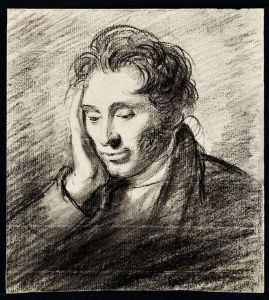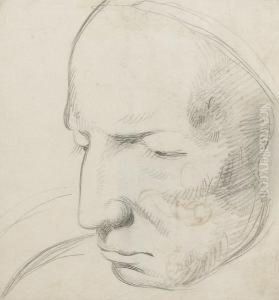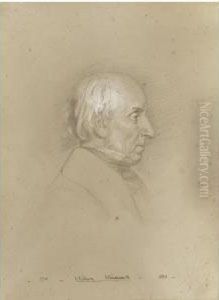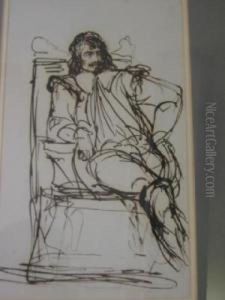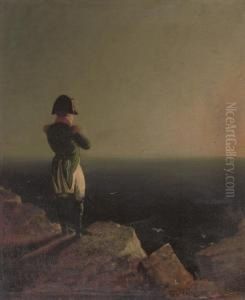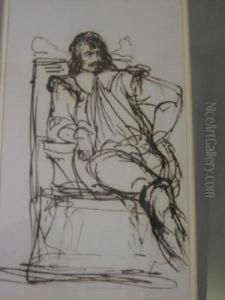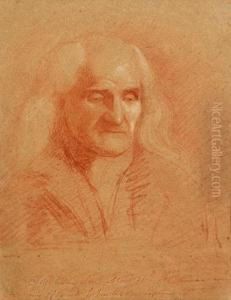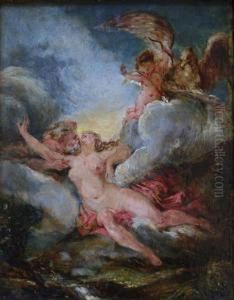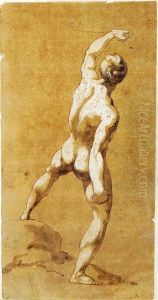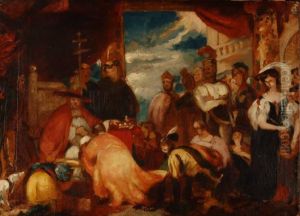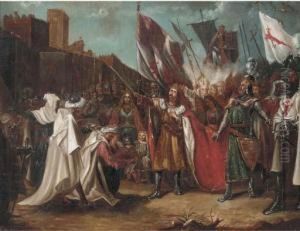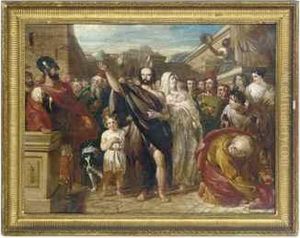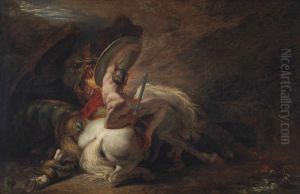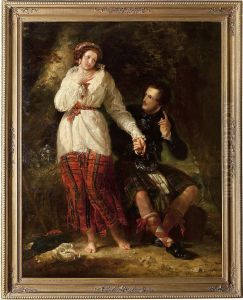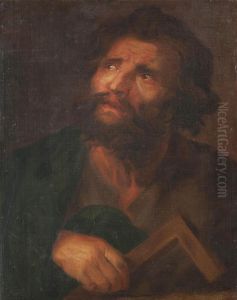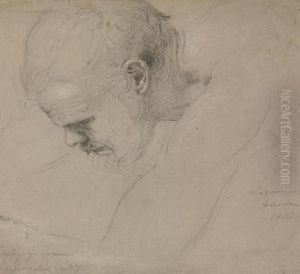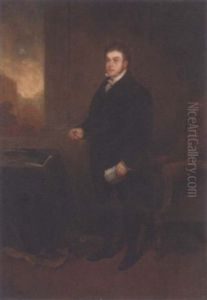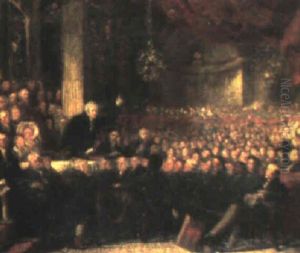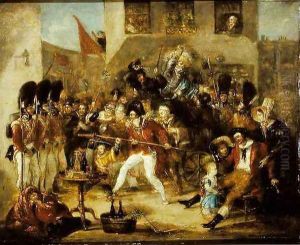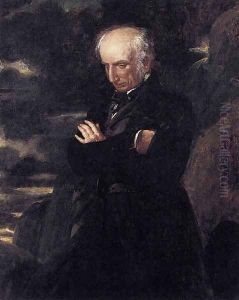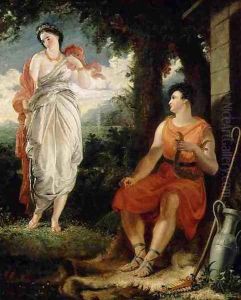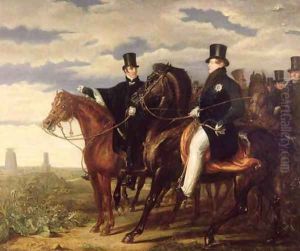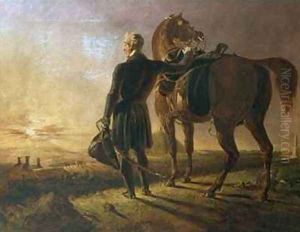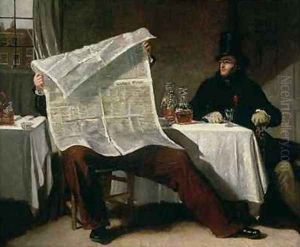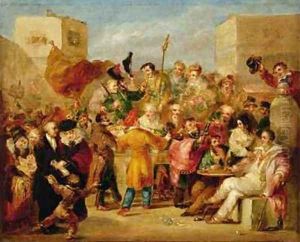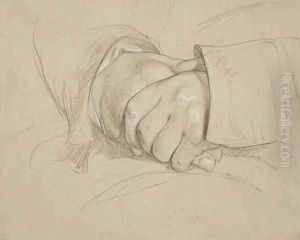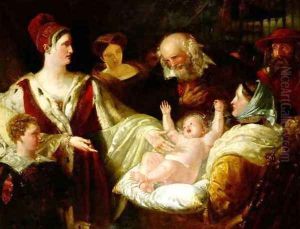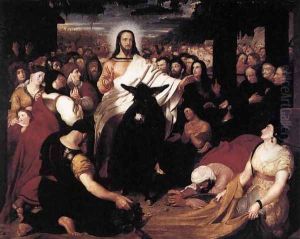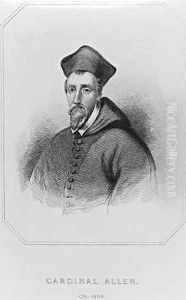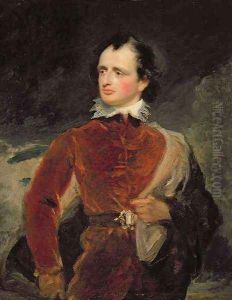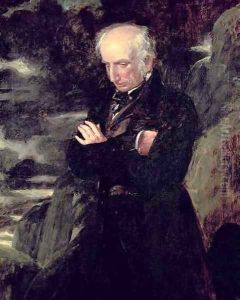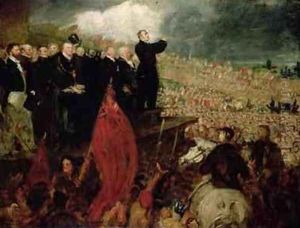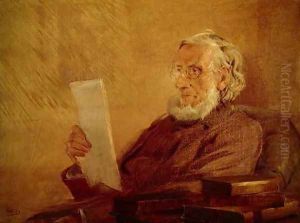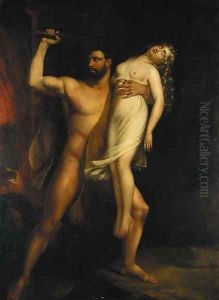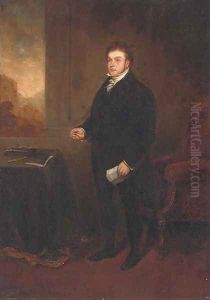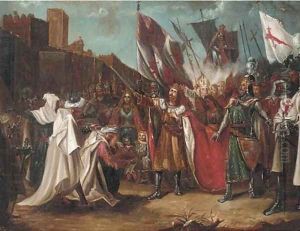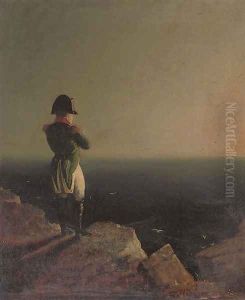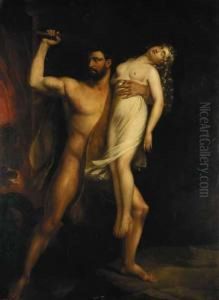Benjamin Robert Haydon Paintings
Benjamin Robert Haydon was an English painter, writer, and teacher, known for his grandiose historical paintings, although he is perhaps just as well known for his personal struggles and eventual tragic end. Born on January 26, 1786, in Plymouth, Devon, Haydon displayed an early interest in art. Despite his father's wish for him to join the family business, Haydon left for London in 1804 to pursue his passion for painting. He entered the Royal Academy Schools in 1805 but soon grew disillusioned with the Academy's teachings, which he found too restrictive.
Haydon was fiercely ambitious and aspired to revitalize history painting, which he believed could educate and inspire the nation. He was particularly influenced by the Elgin Marbles, which are a collection of classical Greek marble sculptures that were brought to Britain by Lord Elgin. He considered their display in London to be a transformative moment for British art. Haydon's enthusiasm for high art led him to advocate for public access to art and for government support for artists, a rather progressive stance for his time.
His major works include 'The Judgment of Solomon' (1812), 'Christ's Entry into Jerusalem' (1820), and 'The Mock Election' (1827), which showcase his belief in the moral and educational power of art. Unfortunately, his works were often met with a lukewarm reception and financial success eluded him. Haydon was plagued by debts throughout his life, which led to multiple imprisonments. His financial woes, combined with his strong opinions and abrasive personality, often alienated patrons and the art establishment.
In addition to painting, Haydon also wrote extensively. He kept detailed diaries that provide a valuable insight into the cultural life of his times and his own turbulent career. His writings also include criticism, autobiography, and discussions on art theory. Haydon's teaching and writing influenced future generations of artists, including the young John Everett Millais and Dante Gabriel Rossetti.
Despite moments of recognition and the support of a few loyal patrons, Haydon's life was marked by disappointment and poverty. He struggled with depression, and his career suffered from his inability to navigate the commercial art world effectively. On June 22, 1846, Benjamin Robert Haydon took his own life in his London studio, a tragic end to a life dedicated to the pursuit of high art. His legacy is a complex one, embodying both the potential for art to inspire and educate and the personal costs of a life lived in pursuit of such ideals.
